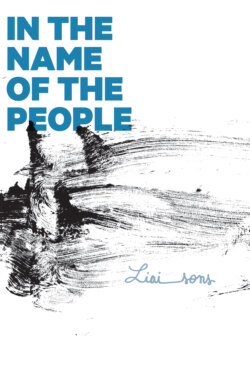Читать книгу In the Name of the People - Liaisons - Страница 11
На сайте Литреса книга снята с продажи.
II: PLANE OF CONSISTENCY, 1970
ОглавлениеIn the collections of comrades’ archives from times past, we have discovered a genuine plane of consistency, a network at the same time dense and diffuse, that from 1963 to 1970 was spread throughout the territory to the point that separatism was no longer a national question, but an existential one. For a brief yet dazzling moment, the program of the separation of the province of Quebec from the Canadian federation came to mean the separation of the “Quebecois People” from itself, revealing the separatist line of fracture within families, workplaces, etc. This break, which traversed the entire province, brought to light a multitude of existences and territories linked by a de facto independence: a collective autonomy inextricably material, ideological, and cultural, that diffusely grouped everything that differed from national unity to integrate a transversal alliance of movements of workers, students, and counterculture. The nation referred less to the entire population than to taking part in the separatist party. As writer Malcolm Reid states in his book The Shouting Signpainters: “A nation called Quebec was emerging from the snack bars of the east end of Montreal where it had been trapped under the name French-Canada. It was painting slogans on the walls, bombing federal buildings and monuments, flowing into the street …”
Since its formation in 1963, the Front de libération du Québec (FLQ) fought for national independence, mobilizing by any means necessary to that effect. In 1969, bombs exploded across the territory every two weeks—including at the Montreal stock exchange, in the mailboxes of rich anglophone neighborhoods, in a factory on lockout, or at an armory. The decentralized structure of the FLQ made it a particularly difficult target for the police to pin down. Its multiple cells, which seldom knew each other, each had their own broadcasting outlets—as many as ten distinct publications, addressing themselves to students, workers or the unemployed.
In 1970, after an extremely tense year in Montreal, where the power of the revolutionary movement had led the liberal government to ban assemblies (using laws of emergency in many ways similar to those used in 2012), the FLQ launched an operation aimed at expanding outside the metropolis to the distant regions of Quebec. In order to connect to embryonic struggles in different parts of the territory, FLQ cells opened a series of spaces across the province, strategically situated on the road taken by vacationers in the summertime. Some of these places, like the Maison du Pêcheur on the Gaspesian coastline or the Ferme du Petit Québec Libre in the Eastern Townships—initially established by the Free Jazz Ensemble of Quebec, whose musical experimentations colored political ones—attracted hordes of young people to issues of counterculture as well as activists in the area, and provoked aggressive confrontations with local bigwigs. The proliferation of these gathering points augmented the potential to form a movement by providing a series of zones of open condensation.
In the summer of 1970, having extended its decentralized network from Montreal to the whole province, and benefiting from considerable support from the general population despite its violent tactics, the network of the FLQ and its allies gave the authorities serious cause for concern. This was especially true since its conception of independence did not involve the idea of constituting a state—and hence, any possibility of political negotiation—but rather obtaining independence promptly and through action, instantiated through a network of communes, armed groups, and popular committees. Moreover, this network was tuned into struggles on an international level, through its alliances with the National Liberation Front in Algeria (where the FLQ had an “embassy”), the Popular Front for the Liberation of Palestine, the Black Panther Party and various groups of the American New Left, in a unique confluence where the most ardent nationalists turned out to be the most significant internationalists. It was at that moment that the concept of a “nation” became more of a call for genuine experimentation than an institutional demand.
In September 1970, following a hot summer throughout the province, the Liberation cell of the FLQ kidnapped the British diplomat James Richard Cross, demanding the liberation of their political prisoners in exchange for his release. The FLQ followed the example of their Palestinian comrades—with whom many of their members had trained—choosing kidnapping as a strategy for mounting tension. Faced with the authorities’ refusal to negotiate, the FLQ’s Chénier cell doubled the stakes by kidnapping the minister of labor, Pierre Laporte, known for his links with the mafia and his crackdowns against the labor movement. In response, on October 16, 1970, the Canadian government, directed by Pierre Elliott Trudeau (the father of current prime minister Justin Trudeau), decreed the War Measures Act, instituting a state of emergency suspending civil rights and sending the Canadian army into the streets of Quebec. Some five hundred arrests and warrantless searches of the extreme separatist Left were made. Within weeks, this vast shock operation succeeded in criminalizing all the militant organizations—even locking up union leaders—and scaring away their partisans, provoking a demoralization of the revolutionary movement.
The three letters FLQ soon became nothing more than a foil that History strove to reduce to a few political hotheads to cover up the vast array of those silenced by the state of emergency. October 1970 broke the alliance that was constructed among heterogeneous forms. The most striking example is the rupture that took place between the Far Left and the counterculture, the former of which later took the form of a rigid Marxism-Leninism, and the latter of which was characterized by a return to the land and a mystic new-age delirium.
